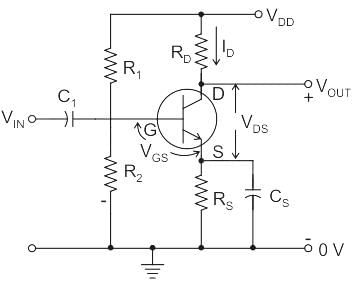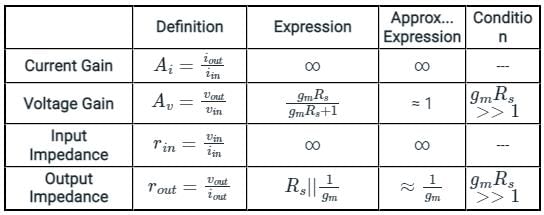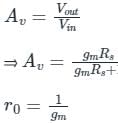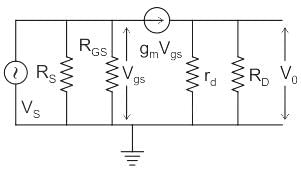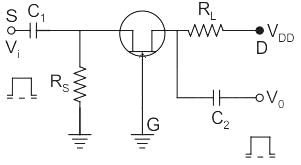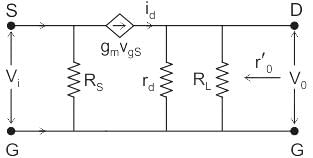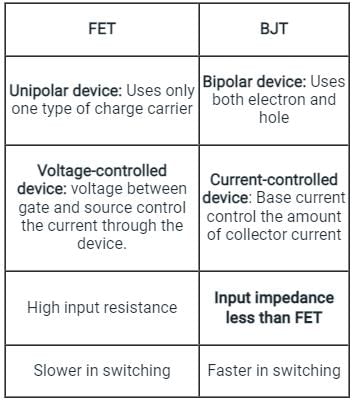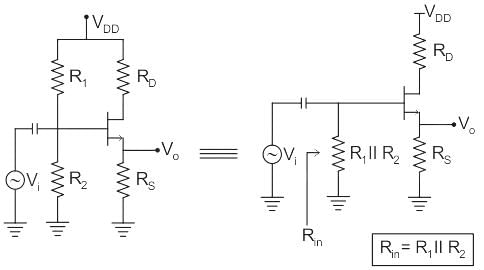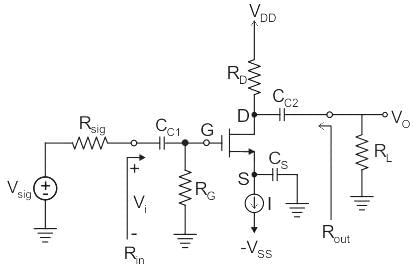Electrical Engineering (EE) Exam > Electrical Engineering (EE) Tests > GATE Electrical Engineering (EE) Mock Test Series 2026 > Test: FET Amplifier - 2 - Electrical Engineering (EE) MCQ
Test: FET Amplifier - 2 - Electrical Engineering (EE) MCQ
Test Description
15 Questions MCQ Test GATE Electrical Engineering (EE) Mock Test Series 2026 - Test: FET Amplifier - 2
Test: FET Amplifier - 2 for Electrical Engineering (EE) 2025 is part of GATE Electrical Engineering (EE) Mock Test Series 2026 preparation. The Test: FET Amplifier - 2 questions and answers have been
prepared according to the Electrical Engineering (EE) exam syllabus.The Test: FET Amplifier - 2 MCQs are made for Electrical Engineering (EE) 2025 Exam. Find important
definitions, questions, notes, meanings, examples, exercises, MCQs and online tests for Test: FET Amplifier - 2 below.
Solutions of Test: FET Amplifier - 2 questions in English are available as part of our GATE Electrical Engineering (EE) Mock Test Series 2026 for Electrical Engineering (EE) & Test: FET Amplifier - 2 solutions in
Hindi for GATE Electrical Engineering (EE) Mock Test Series 2026 course. Download more important topics, notes, lectures and mock
test series for Electrical Engineering (EE) Exam by signing up for free. Attempt Test: FET Amplifier - 2 | 15 questions in 45 minutes | Mock test for Electrical Engineering (EE) preparation | Free important questions MCQ to study GATE Electrical Engineering (EE) Mock Test Series 2026 for Electrical Engineering (EE) Exam | Download free PDF with solutions
Detailed Solution for Test: FET Amplifier - 2 - Question 1
Detailed Solution for Test: FET Amplifier - 2 - Question 2
Detailed Solution for Test: FET Amplifier - 2 - Question 3
Detailed Solution for Test: FET Amplifier - 2 - Question 4
Test: FET Amplifier - 2 - Question 5
The output resistance of FET when operating in pinch off at a current 10 mA and λ = 0.05 V-1 is given as
Detailed Solution for Test: FET Amplifier - 2 - Question 5
Detailed Solution for Test: FET Amplifier - 2 - Question 6
Test: FET Amplifier - 2 - Question 7
Thermal runaway is not possible in FET because as the temperature increases
Detailed Solution for Test: FET Amplifier - 2 - Question 7
Test: FET Amplifier - 2 - Question 8
The voltage gain of a common-source JFET amplifier depends up on its
Detailed Solution for Test: FET Amplifier - 2 - Question 8
Test: FET Amplifier - 2 - Question 9
Compared to bipolar transistors, field effect transistors are NOT normally characterized by:
Detailed Solution for Test: FET Amplifier - 2 - Question 9
Test: FET Amplifier - 2 - Question 10
The most commonly used feedback arrangement in cascaded amplifier is:
Detailed Solution for Test: FET Amplifier - 2 - Question 10
Test: FET Amplifier - 2 - Question 11
In a Common Drain (CD) MOSFET amplifier with voltage divider bias with R1 and R2 equal to 1.5 MΩ and 1 MΩ respectively, the input impedance Zf is:
Detailed Solution for Test: FET Amplifier - 2 - Question 11
Test: FET Amplifier - 2 - Question 12
When a 1 V increase in the gate voltage changes the drain current 10 mA in a FET, its gm equals.
Detailed Solution for Test: FET Amplifier - 2 - Question 12
Detailed Solution for Test: FET Amplifier - 2 - Question 13
Detailed Solution for Test: FET Amplifier - 2 - Question 14
Detailed Solution for Test: FET Amplifier - 2 - Question 15
|
25 docs|247 tests
|
Information about Test: FET Amplifier - 2 Page
In this test you can find the Exam questions for Test: FET Amplifier - 2 solved & explained in the simplest way possible.
Besides giving Questions and answers for Test: FET Amplifier - 2, EduRev gives you an ample number of Online tests for practice
|
25 docs|247 tests
|
Download as PDF


